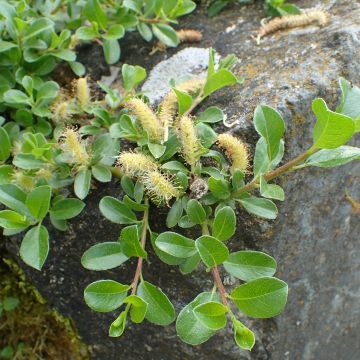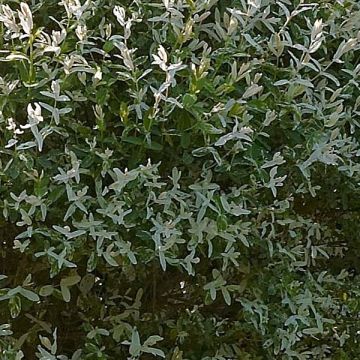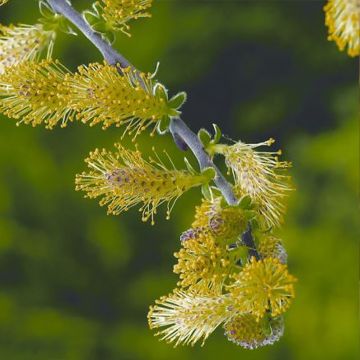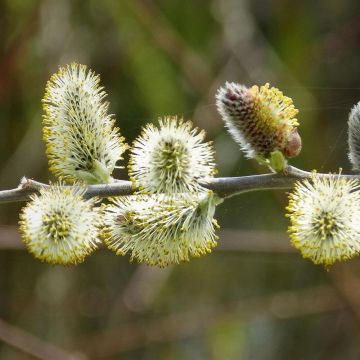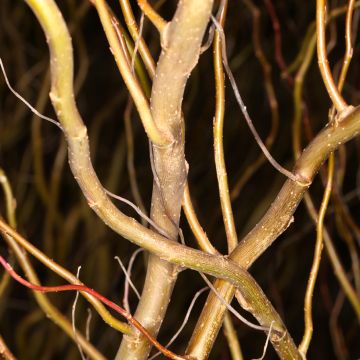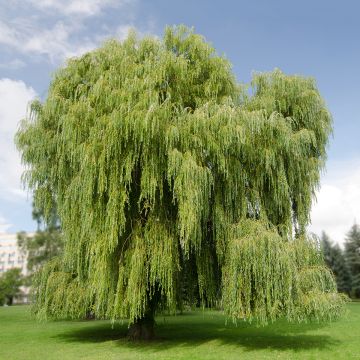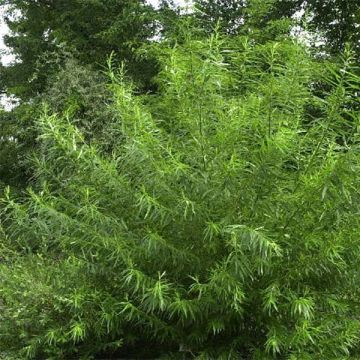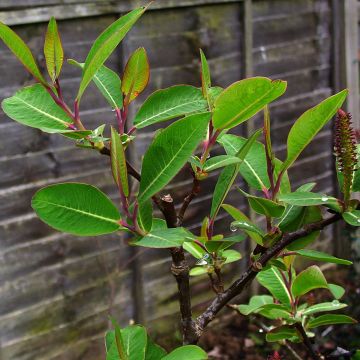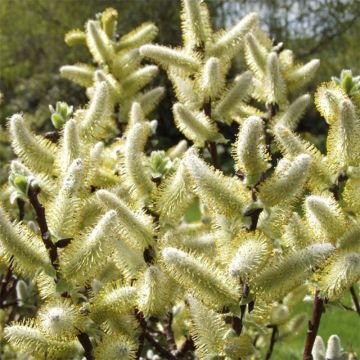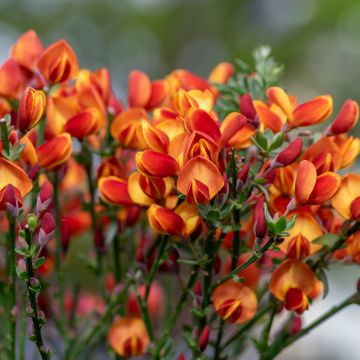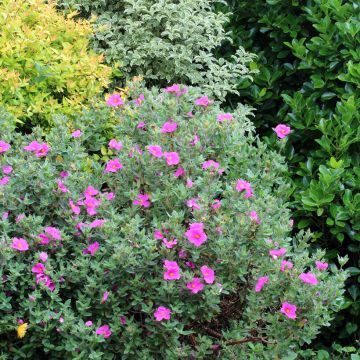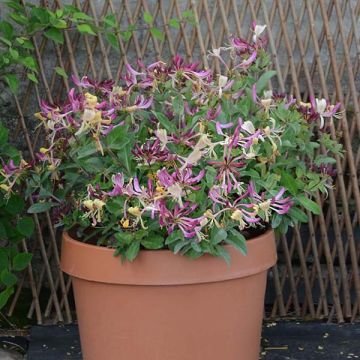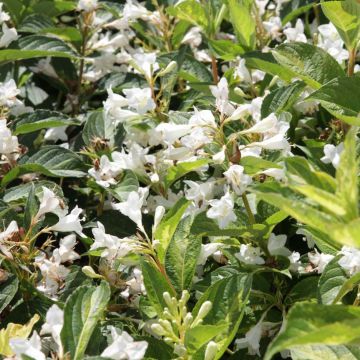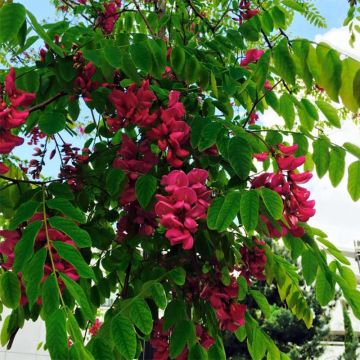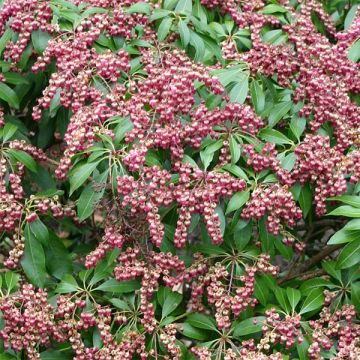

Salix triandra - Almond Willow


Salix triandra - Almond Willow


Salix triandra - Almond Willow
Salix triandra - Almond Willow
Salix triandra
Almond Willow
Special offer!
Receive a €20 voucher for any order over €90 (excluding delivery costs, credit notes, and plastic-free options)!
1- Add your favorite plants to your cart.
2- Once you have reached €90, confirm your order (you can even choose the delivery date!).
3- As soon as your order is shipped, you will receive an email containing your voucher code, valid for 3 months (90 days).
Your voucher is unique and can only be used once, for any order with a minimum value of €20, excluding delivery costs.
Can be combined with other current offers, non-divisible and non-refundable.
Home or relay delivery (depending on size and destination)
Schedule delivery date,
and select date in basket
This plant carries a 24 months recovery warranty
More information
We guarantee the quality of our plants for a full growing cycle, and will replace at our expense any plant that fails to recover under normal climatic and planting conditions.
Would this plant suit my garden?
Set up your Plantfit profile →
Description
Salix triandra or grey willow is a small tree or large bush native to wet places in Europe. It is one of the most commonly used willows in basketry because it produces very erect, straight, and tapered young branches each year, especially when grown as a pollard! They are particularly ornamental in the garden as they take on quite vibrant colours: olive to reddish brown. It has pretty lanceolate and pointed leaves, dark green on the upper surface, glaucous on the lower surface. In spring, it produces elongated male catkins of bright yellow. Use it as a tree or a large bush to create a beautiful informal hedge in combination with other trees and shrubs. To regularly have numerous flowering and well-coloured branches, prune them at their base every few years. This almond willow with its light and fresh foliage is very easy to grow in fairly deep, rich, and moist to wet soils.
Salix triandra belongs to the willow family. It is a deciduous botanical species native to mainly central Europe and central and northern Asia. The almond willow is a light species that particularly likes heavy, clayey, rich, and moist soils.
It has a bushy habit, often with several upright trunks. It is often found pruned as a pollard because it is cultivated for basketry. At maturity, it forms a bush 6 m (20ft) high and 4 m (13ft) wide but it can easily exceed 20 metres (66 feet) if left to develop naturally. The young branches are smooth, channelled, tapered, and olive-green. As it ages, the bark becomes brown and tends to peel off in plates, revealing a brownish-orange layer underneath. The deciduous foliage is composed of leaves which are dark green and shiny on the upper surface with a matte, glaucous underside. They turn yellow in autumn before falling. Very lanceolate, oval-elliptical, pointed, with wavy edges, they measure 5 to 10 cm (2 to 4in) long. Flowering occurs in March-April, in catkins, before the appearance of the leaves, on 1-year-old branches. The male catkins are very decorative and nectar-rich. These elongated and loose catkins, 5 to 10 cm (2 to 4in) long, bear 3 stamens alluded to by the name "triandra". The female catkins are more discreet. Almond willow is dioecious, bearing male and female flowers on separate plants.
The almond willow is perfectly resistant to heavy frost and is very easy to grow in ordinary soil, in all regions. Undemanding with regards to the soil, it prefers heavy, clayey, rich, and not too dry soil. Prune it every year after flowering to encourage it to thicken and produce numerous flowering branches. It can be placed in isolation, surrounded by early-flowering bulbs (snowdrops, crocuses, fritillaries, hyacinths), in an informal hedge, or at the back of a border. It will be perfect in a nature-inspired garden. Consider creating bouquets with its branches adorned with silvery catkins. In a vase, they beautifully accompany those of the Prunus triloba, flowering cherry and plum trees that will be awakened by the warmth of the house.
Properties:
Like all willows, this species contains a substance similar to aspirin in its bark. It is highly nectar-rich and honey-producing: bees that gather nectar from it produce honey of golden yellow colour, iridescent with green, which takes on amber to beige hues as it ages. Its flavour is sweet, floral and slightly woody. Relatively rare, this honey is mainly produced in the west of France. Its foliage was formerly used as fodder for goats.
Report an error about the product description
Salix triandra - Almond Willow in pictures
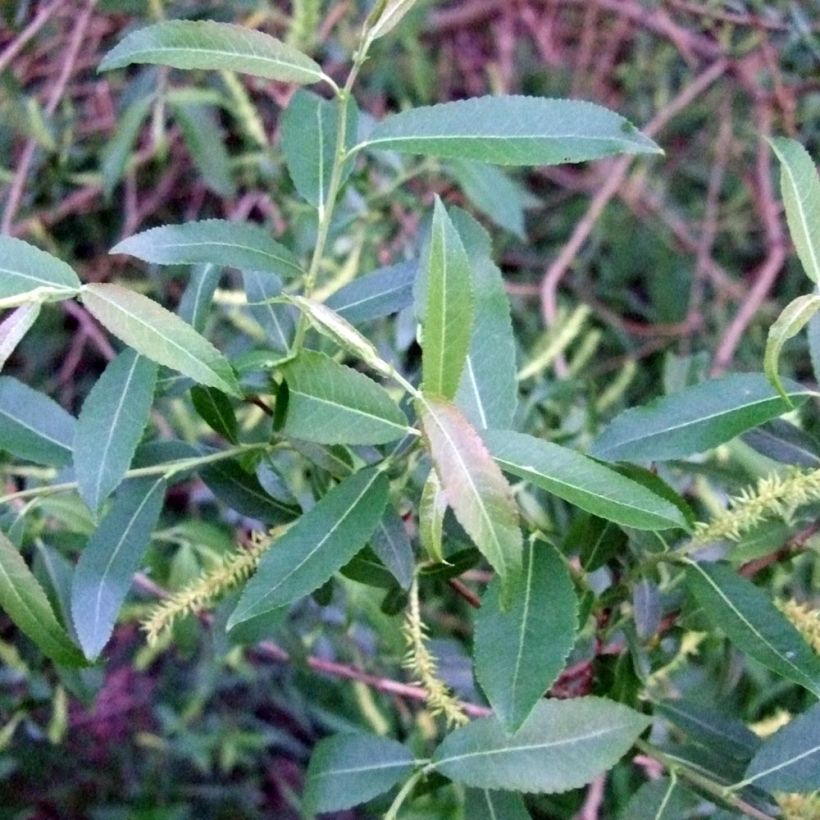

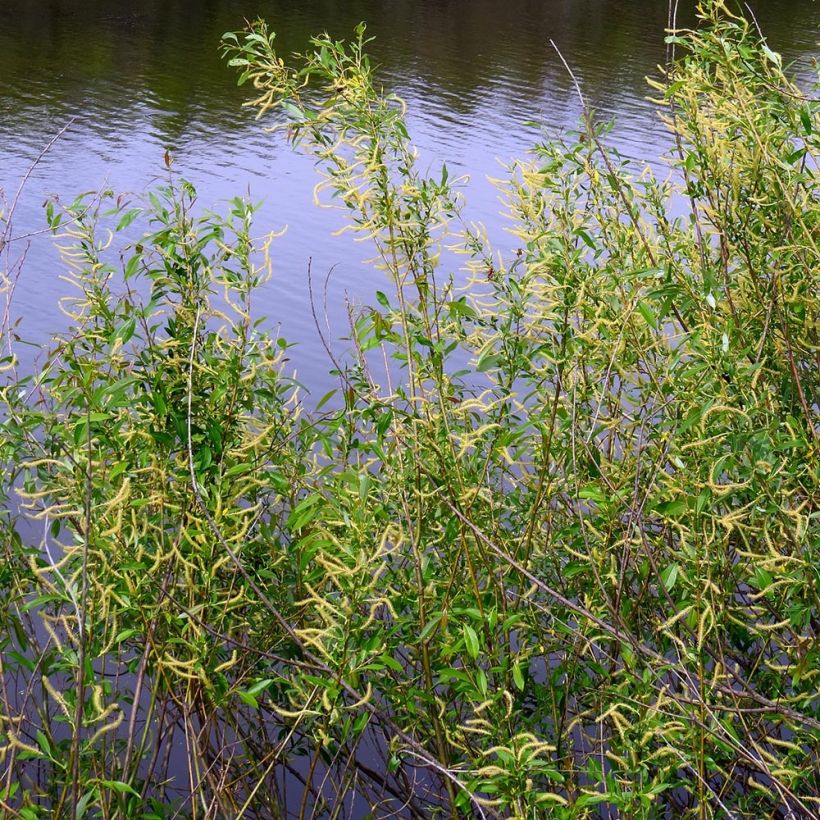

Plant habit
Flowering
Foliage
Botanical data
Salix
triandra
Salicaceae
Almond Willow
Central Europe
Other Willow - Salix
View all →Planting and care
Plant Almond Willow in a sunny position, sheltered from strong winds that could uproot this small tree with a poorly developed root system. Place a sturdy stake that you can remove after 2 or 3 years of cultivation. It is not demanding in terms of soil as long as it has a certain depth, allowing the bush to find some moisture in case of drought. In hot regions, once the plant is established, generous watering every 15 days or 3 weeks will be sufficient. A shrub of wet places, it prefers a location with heavy, clayey, rich and very moist soil. Limestone is not a problem. Ideally, at planting, use a mixture composed of half potting soil and half garden soil. It is perfectly resistant to cold and heavy frosts. To promote a bushy habit and the formation of branches bearing catkins, prune quite short (5 cm (2in)) after flowering every year.
Planting period
Intended location
Care
This item has not been reviewed yet - be the first to leave a review about it.
Similar products
Haven't found what you were looking for?
Hardiness is the lowest winter temperature a plant can endure without suffering serious damage or even dying. However, hardiness is affected by location (a sheltered area, such as a patio), protection (winter cover) and soil type (hardiness is improved by well-drained soil).

Photo Sharing Terms & Conditions
In order to encourage gardeners to interact and share their experiences, Promesse de fleurs offers various media enabling content to be uploaded onto its Site - in particular via the ‘Photo sharing’ module.
The User agrees to refrain from:
- Posting any content that is illegal, prejudicial, insulting, racist, inciteful to hatred, revisionist, contrary to public decency, that infringes on privacy or on the privacy rights of third parties, in particular the publicity rights of persons and goods, intellectual property rights, or the right to privacy.
- Submitting content on behalf of a third party;
- Impersonate the identity of a third party and/or publish any personal information about a third party;
In general, the User undertakes to refrain from any unethical behaviour.
All Content (in particular text, comments, files, images, photos, videos, creative works, etc.), which may be subject to property or intellectual property rights, image or other private rights, shall remain the property of the User, subject to the limited rights granted by the terms of the licence granted by Promesse de fleurs as stated below. Users are at liberty to publish or not to publish such Content on the Site, notably via the ‘Photo Sharing’ facility, and accept that this Content shall be made public and freely accessible, notably on the Internet.
Users further acknowledge, undertake to have ,and guarantee that they hold all necessary rights and permissions to publish such material on the Site, in particular with regard to the legislation in force pertaining to any privacy, property, intellectual property, image, or contractual rights, or rights of any other nature. By publishing such Content on the Site, Users acknowledge accepting full liability as publishers of the Content within the meaning of the law, and grant Promesse de fleurs, free of charge, an inclusive, worldwide licence for the said Content for the entire duration of its publication, including all reproduction, representation, up/downloading, displaying, performing, transmission, and storage rights.
Users also grant permission for their name to be linked to the Content and accept that this link may not always be made available.
By engaging in posting material, Users consent to their Content becoming automatically accessible on the Internet, in particular on other sites and/or blogs and/or web pages of the Promesse de fleurs site, including in particular social pages and the Promesse de fleurs catalogue.
Users may secure the removal of entrusted content free of charge by issuing a simple request via our contact form.
The flowering period indicated on our website applies to countries and regions located in USDA zone 8 (France, the United Kingdom, Ireland, the Netherlands, etc.)
It will vary according to where you live:
- In zones 9 to 10 (Italy, Spain, Greece, etc.), flowering will occur about 2 to 4 weeks earlier.
- In zones 6 to 7 (Germany, Poland, Slovenia, and lower mountainous regions), flowering will be delayed by 2 to 3 weeks.
- In zone 5 (Central Europe, Scandinavia), blooming will be delayed by 3 to 5 weeks.
In temperate climates, pruning of spring-flowering shrubs (forsythia, spireas, etc.) should be done just after flowering.
Pruning of summer-flowering shrubs (Indian Lilac, Perovskia, etc.) can be done in winter or spring.
In cold regions as well as with frost-sensitive plants, avoid pruning too early when severe frosts may still occur.
The planting period indicated on our website applies to countries and regions located in USDA zone 8 (France, United Kingdom, Ireland, Netherlands).
It will vary according to where you live:
- In Mediterranean zones (Marseille, Madrid, Milan, etc.), autumn and winter are the best planting periods.
- In continental zones (Strasbourg, Munich, Vienna, etc.), delay planting by 2 to 3 weeks in spring and bring it forward by 2 to 4 weeks in autumn.
- In mountainous regions (the Alps, Pyrenees, Carpathians, etc.), it is best to plant in late spring (May-June) or late summer (August-September).
The harvesting period indicated on our website applies to countries and regions in USDA zone 8 (France, England, Ireland, the Netherlands).
In colder areas (Scandinavia, Poland, Austria...) fruit and vegetable harvests are likely to be delayed by 3-4 weeks.
In warmer areas (Italy, Spain, Greece, etc.), harvesting will probably take place earlier, depending on weather conditions.
The sowing periods indicated on our website apply to countries and regions within USDA Zone 8 (France, UK, Ireland, Netherlands).
In colder areas (Scandinavia, Poland, Austria...), delay any outdoor sowing by 3-4 weeks, or sow under glass.
In warmer climes (Italy, Spain, Greece, etc.), bring outdoor sowing forward by a few weeks.






























